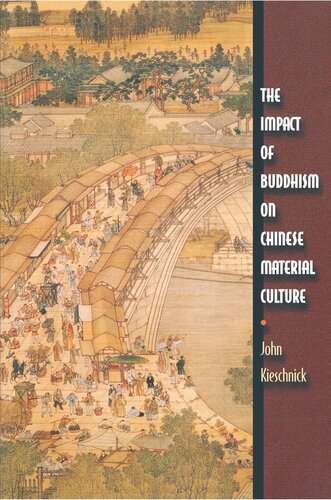

Most ebook files are in PDF format, so you can easily read them using various software such as Foxit Reader or directly on the Google Chrome browser.
Some ebook files are released by publishers in other formats such as .awz, .mobi, .epub, .fb2, etc. You may need to install specific software to read these formats on mobile/PC, such as Calibre.
Please read the tutorial at this link: https://ebookbell.com/faq
We offer FREE conversion to the popular formats you request; however, this may take some time. Therefore, right after payment, please email us, and we will try to provide the service as quickly as possible.
For some exceptional file formats or broken links (if any), please refrain from opening any disputes. Instead, email us first, and we will try to assist within a maximum of 6 hours.
EbookBell Team

4.3
98 reviewsFrom the first century, when Buddhism entered China, the foreign religion shaped Chinese philosophy, beliefs, and ritual. At the same time, Buddhism had a profound effect on the material world of the Chinese. This wide-ranging study shows that Buddhism brought with it a vast array of objects big and small--relics treasured as parts of the body of the Buddha, prayer beads, and monastic clothing--as well as new ideas about what objects could do and how they should be treated. Kieschnick argues that even some everyday objects not ordinarily associated with Buddhism--bridges, tea, and the chair--on closer inspection turn out to have been intimately tied to Buddhist ideas and practices. Long after Buddhism ceased to be a major force in India, it continued to influence the development of material culture in China, as it does to the present day.
At first glance, this seems surprising. Many Buddhist scriptures and thinkers rejected the material world or even denied its existence with great enthusiasm and sophistication. Others, however, from Buddhist philosophers to ordinary devotees, embraced objects as a means of expressing religious sentiments and doctrines. What was a sad sign of compromise and decline for some was seen as strength and versatility by others. Yielding rich insights through its innovative analysis of particular types of objects, this briskly written book is the first to systematically examine the ambivalent relationship, in the Chinese context, between Buddhism and material culture.